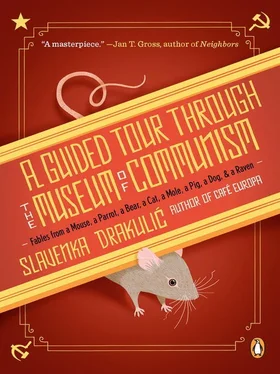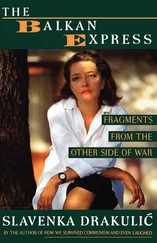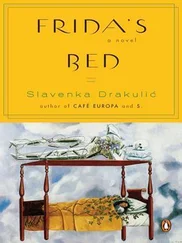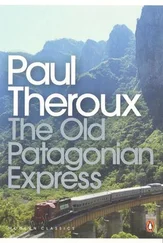Thus, two similar words canceled each other out: There was no goulash in the gulag—and there was no gulag in goulash communism. The reader must admit that there is a remarkable difference between these principles, marking the distinction between life and death. In a Socialist country, generally speaking, life boiled down to politics; we did not exist outside of the political realm. A wrong word and one was demoted, lost a job, or was gone forever. I happen to know this not only because I read about it, but also because this was why my cousin had grown up without a father. He was executed in the Stalinist purges in Hungary in 1949. Yes, the Communist revolution did eat its children, after all. We pigs could bear witness to that…
If you ask me, the era of Kádar started in 1970, when my family first bought a car, a Trabant made in the GDR. It was small and ridiculous from today’s point of view, but it took us to Grandma’s village, to Lake Balaton to swim—which we pigs particularly liked—and as far as the Adriatic coast of what was then Yugoslavia. At the border, though, we did encounter some minor problems, as Yugoslavs did not expect pigs to be driving a car or to have passports. Thanks to father’s knowledge of their pig language, and even more to the American cigarettes he had obtained illegally, we always crossed over. Swimming in the Adriatic Sea, at the coastal town of Baška Voda, was simply a fantastic experience for us piglets. The sea was warm, blue, and transparent, and I remember seeing a tiny fish swimming close to me. Ah, those were good times for pigs! But it doesn’t mean that my generation grew up politically unaware of the kind of political circumstances we lived under, especially as it was not easy to cross the border toward Italy or Austria.
By the way, let me tell you that I was among the first Hungarian pigs who, together with citizens of the GDR, crossed that very border, near Sopron, where in August of 1989 Austrians and Hungarians together cut down the barbed wire and let us cross over to the western side. How euphoric we were then… We believed that everything would change overnight. In fact, instead of goulash communism, we got goulash capitalism. That is, capitalism with a lot of leftovers from Kádarism , if one may say so. However, there is hope! Because, to paraphrase Heraclitus, one could not step twice in the same goulash. But I did not get too far. I came back home soon afterward. However, since with my qualifications I couldn’t get a suitable job, I went farther west. Twenty years later, here I am in London, writing about goulash and, inevitably, about goulash communism.
Allow me, please, one more explanation: Besides writing a Hungarian cookbook, I also want to draw the reader’s attention to another, if not political then important social aspect of cooking: to the fact that women usually cook for a family, and they cook every day. Even though many women would probably prefer to do it only from time to time, like men. That they have to feed us on a daily basis doesn’t mean that women are not good, solid cooks and even excellent chefs. But, in contrast to men, they don’t consider their daily meals as masterpieces that deserve to be admired.
Male cooks primarily want to show off. Did you ever notice that almost all great chefs are men? Why? Because males of all kinds need spectators. To them, preparing a fine meal is yet another way of demonstrating their egos. Therefore, they cook for special guests, while females do the everyday cooking. However, I have noticed that there is hope for men and other males, because a change is taking place among youngsters. You just can’t overlook the fact that female and male roles in the kitchen are rapidly changing.
I think that cookbooks should be divided into male and female. Call me a feminist pig if you want, but my cookbook is a feminist one! Does that sound contradictory? The reader must wonder what a feminist cookbook really means? Does it have something to do with frozen food from a supermarket, since feminists certainly are not into spending their lives in the kitchen, as women did for generations? No, it has to do with simplicity. By the way, let me declare here and now that I consider all females of all kinds to be emancipated if they can earn their own living and can make their own decisions independently. To me, economic independence is the main criterion for emancipation.
Although feminism might sound a bit old-fashioned nowadays, it is still needed. Look at the countries in transition, where I come from. In my political scientist’s opinion, women are the biggest losers with the downfall of Communism in Eastern Europe. I saw with my very own eyes how dissidents, suddenly coming to power, forgot all about their female partners. What about all the female legwork done for the “velvet revolution” to happen (although it wasn’t velvet all over Eastern Europe)—from planning, discussing, writing, printing, distributing leaflets, and marching together to cooking for them, getting them back on their feet when they drank too much, or hiding them from the police? After 1990 these dissident females vanished into thin air! So much for equality… Obviously, there is no equality when it comes to acquiring power. Women in the former Communist countries are, generally, worse off. They were the first ones to lose jobs and the last ones to get them. A friend back home told me that her thirty-year-old daughter had to sign a secret contract when she finally got a job. She had to promise that she wouldn’t have children for the next five years! And many of her friends, young females, are forced to do the same, because this is the only way to get employment. They have to live with the laws of “cowboy capitalism,” more cruel than here in the West. I saw that in my part of the world there is nobody to protect women; no government will take care of their rights if they don’t learn to do so themselves.
Now, my task in this book is, as I said, to introduce the reader to traditional Hungarian cuisine. Please bear in mind that I consider myself to be a patriot when I say that, compared to French or Chinese cuisine, I think Hungarian cuisine is hardly a great cuisine at all! But this goes for most other cuisines as well. In Hungarian cuisine there are a number of recipes, some of them originating in the vast plains situated between Austria to the west and Ukraine and Romania to the east—that is today’s Hungary. But we must admit that many of these meals are just local variations of Turkish recipes. This is the case in all European countries where the Ottomans ruled for hundreds of years, places like Greece, Bulgaria, the former Yugoslavia, Romania, and, yes, my beloved Hungary.
But Hungarians believe that the world, especially real gourmets, surely knows about its fantastic achievements. As every Hungarian cookbook will proudly inform you, it has a “long and rich tradition.” Of course, like all intellectuals, I like to challenge prejudices, here, for example, the notion that its tradition is long . Since Magyars are of nomadic origin, regardless of whether you support the Finno-Ugric, or even the most exotic Sumerian theory of their origin, it hardly facilitates cooking. It is not easy to imagine all those Magyar warriors furiously spurring their horses in order to scare off their enemies while the pots and pans tied to them (to their waists, perhaps?) are clanging and making a hellish noise. Or perhaps it was the very noise that helped them to chase away their enemies? I even dare say that this is a new and original hypothesis that might be worthwhile pursuing further!
The most characteristic spice that earned Hungarian cuisine (as well as its females!) the reputation of being hot is red paprika—or peppers. And although the Turks had already introduced it in the sixteenth century, it only became widely used relatively recently. We could date the traditional (i.e., hot) Hungarian cuisine back only to the nineteenth century. As for Hungarian cuisine being rich—well, let me tell you that the basic ingredients usually include various meats and poultry, as well as fish, carrots, cabbage, sauerkraut, a lot of sour cream, red beets, beans of all kinds, and mushrooms (cooked in lard, which in the modern world is absolutely unacceptable)—and there you are. It sounds to me poor rather than rich. However, one can cook fine food with these ingredients, providing that they are fresh.
Читать дальше












